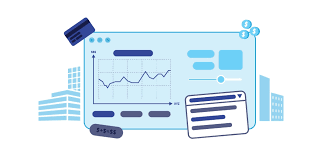Physical Address
304 North Cardinal St.
Dorchester Center, MA 02124
Physical Address
304 North Cardinal St.
Dorchester Center, MA 02124

The SaaS industry is witnessing a significant shift from fixed subscription pricing to usage-based pricing (UBP). This model, also known as consumption-based pricing, charges customers based on actual usage rather than a flat monthly or annual fee.
🚀 Why is this shift happening?
✔ Customers demand greater flexibility and cost transparency.
✔ Businesses seek higher revenue scalability and improved customer retention.
✔ Advancements in AI and cloud computing enable real-time usage tracking.
This article explores the benefits, challenges, and future of UBP in SaaS.
Usage-based pricing aligns costs with customer usage, making it an elastic pricing model. Instead of paying a fixed fee, customers are charged based on:
✔ API calls (e.g., Stripe, Twilio)
✔ Data consumption (e.g., Snowflake, AWS)
✔ Number of users/seats (e.g., Slack, HubSpot)
✔ Feature usage (e.g., Zapier, OpenAI API)
📌 Example: AWS charges based on compute, storage, and network usage, ensuring cost efficiency for businesses of all sizes.
✔ Lower initial costs make SaaS solutions more affordable for startups and small businesses.
✔ Customers only pay for what they actually use, preventing overpayment.
📌 Example: Twilio’s UBP allows startups to access enterprise-grade communication APIs without large upfront costs.
✔ Customers stay longer because costs align with actual value received.
✔ As businesses scale, their usage grows, leading to automatic revenue expansion.
📌 Example: Snowflake’s pay-as-you-go model allows businesses to scale without switching providers.
✔ If customers succeed and use more, revenue naturally increases.
✔ Encourages SaaS companies to focus on customer experience and product value.
📌 Example: HubSpot’s pricing scales as customers add more contacts, integrations, and users.
✔ UBP offers a unique selling point (USP) compared to fixed-price competitors.
✔ Enables SaaS companies to attract diverse customer segments.
📌 Example: OpenAI API charges based on token usage, making AI accessible to developers at various scales.
✔ SaaS companies may face fluctuating monthly revenues.
✔ Requires accurate forecasting models to maintain stability.
📌 Solution: Hybrid pricing models (fixed base fee + usage-based add-ons) can balance stability and flexibility.
✔ Requires real-time usage tracking and dynamic billing systems.
✔ Customers may struggle to predict monthly costs.
📌 Solution: Transparent pricing dashboards and AI-driven usage forecasts help customers track spending.
✔ Businesses prefer predictable expenses over fluctuating costs.
✔ High-usage months may shock customers with unexpected bills.
📌 Solution: Offer cost caps, prepaid plans, and real-time usage alerts.
To balance revenue predictability and customer flexibility, many SaaS companies use a hybrid pricing model:
✔ Base Subscription Fee (predictable revenue)
✔ Usage-Based Add-ons (scalability & flexibility)
📌 Example: Zapier offers a free tier + paid plans + pay-as-you-go automation credits.
🔮 AI-driven dynamic pricing: Adjusts costs based on real-time demand.
🔮 Personalized pricing models: Tailored usage tiers for different customer segments.
🔮 Blockchain for transparent billing: Secure, tamper-proof tracking of service consumption.
📌 Stat: 50% of SaaS companies will adopt or experiment with UBP by 2027 (Bain & Co).
Usage-based pricing is reshaping the SaaS landscape, making software more accessible, scalable, and customer-centric. While challenges exist, smart billing strategies, AI-driven analytics, and hybrid models can help SaaS businesses maximize the benefits of this pricing shift.
🚀 Is your SaaS business ready for the usage-based revolution?